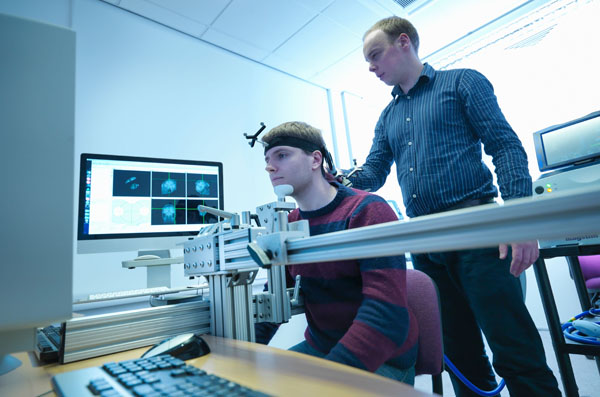 Transcranial magnetic stimulation (TMS) serves as an alternative way to treat mental health issues like depression. It is recommended to patients who have not had any success with conventional treatments, like talk therapy and medication.
Transcranial magnetic stimulation (TMS) serves as an alternative way to treat mental health issues like depression. It is recommended to patients who have not had any success with conventional treatments, like talk therapy and medication.
Depression is linked to low activity in the prefrontal cortex, according to Healthline, and TMS can help increase brain activity there. The treatment involves using an electromagnetic coil to send pulses of magnetic waves into the patient’s brain.
The procedure does not cause significant pain, and it does not require surgically placing electrodes in the patient’s brain, which is the practice in electroconvulsive therapy. TMS can provide long-term relief from the symptoms of depression and other mental health disorders. Some patients can live the rest of their lives without dealing with symptoms of depression once their treatment is complete.
What to expect during a TMS session
TMS is considered an alternative treatment for depression, but it can be just as effective as any other treatment. It can generate better results than conventional treatments like therapy and medication. The average TMS session lasts about 15 minutes to 60 minutes. The first session takes longer because the psychiatrist has to determine the best areas to place the electromagnetic coil on the patient’s head.
The psychiatrist also has to determine the patient’s motor threshold by gradually increasing the magnetic energy sent to the patient’s brain. The threshold is the point where the magnetic waves are enough to make the patient’s fingers twitch.
Patients are advised to bring things that they can use to distract themselves during their treatment, like water for drinking and earbuds for listening to music or podcasts during treatment.
The average TMS session
- The psychiatrist will measure the patient’s head and pinpoint the best location to place the electromagnet being used for the treatment
- They will then gradually increase the pulses being sent into the patient’s brain until it forces their fingers to twitch; this threshold serves as a guide for the rest of the patient’s treatment
- The psychiatrist repeatedly turns the coil on and off to send pulses into the patient’s brain to start their treatment
- This makes a loud clicking noise as the coil creates magnetic pulses, and it is similar to the sounds made by an MRI machine (patients are provided with earplugs to help reduce the noise)
- Each session lasts anywhere between 15 and 40 minutes based on factors like the patient’s brain chemistry
- The patient might feel a tapping sensation on their head as magnetic waves are repeatedly sent into their brain
Patients are free to drive themselves home after the treatment and return to their normal activities. Most people do not experience significant side effects, but some report slight scalp discomfort or headaches afterward. Most patients will need about five of these sessions per week for about six weeks to get significant results.
An alternative way to treat mental health issues
TMS is non-invasive, and it can permanently stop symptoms of depression. Give us a call or stop by our New York clinic to set up an appointment with our therapist.
Request an appointment or call NYC Psychiatric Associates at 917-391-0076 for an appointment in our New York office.
Related Posts
Treating major depressive illness with transcranial magnetic stimulation (TMS) magnetic fields is non-invasive and non-systemic. This method, often recommended when conventional therapies such as antidepressant treatment and talk therapy have failed, can produce significant relief from depression symptoms.Some patients undergoing TMS for depression may be reluctant to forego their antidepressant medication throughout the 6-week treatment…
Transcranial magnetic stimulation (TMS) is fast becoming a popular non-invasive depression therapy. With TMS, electromagnetic pulses help stimulate nerve cells without causing any damage to the cells themselves. It has the potential to alleviate the signs of mental and neurological problems. Patients suffering from depression may respond well to this treatment. This article focuses on…
Transcranial magnetic stimulation (TMS) might be an effective option for people whose depression does not respond to medication, or who want to avoid medication side effects. Mental illness is more common than people think, and depression is one of the most prevalent forms of it. Traditional treatments, such as medication or talk therapy, are often…


